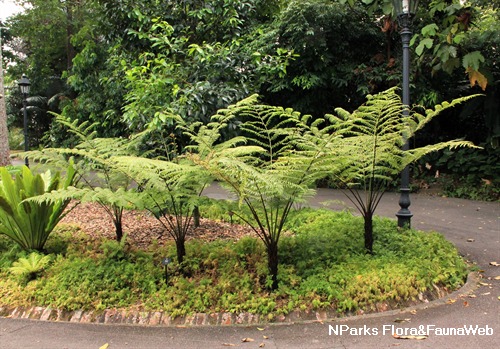
Back
Alsophila latebrosa Wall. ex Hook.
| Family Name: | Cyatheaceae |
| Synonyms: | Cyathea latebrosa (Wall. ex Hook.) Copel. |
| Common Name: | Tree Fern, Paku, 阴生桫椤 |
Name
Classifications and Characteristics
| Plant Division | Ferns & Lycophytes (Non-Seed Vascular Plants) (Fern) |
|---|---|
| Plant Growth Form | Herbaceous Plant |
| Lifespan (in Singapore) | Perennial |
| Mode of Nutrition | Autotrophic |
| Plant Shape | Fountain (Palm-like) |
| Maximum Height | 4 m |
Biogeography
| Native Distribution | India & Southeast Asia (including Singapore). |
|---|---|
| Native Habitat | Terrestrial (Primary Rainforest, Mountain, Secondary Rainforest, Monsoon Forest, Freshwater Swamp Forest, Disturbed Area / Open Ground) |
| Preferred Climate Zone | Tropical, Sub-Tropical / Monsoonal, Highland / Montane |
| Local Conservation Status | Native to Singapore (Least Concern (LC)) |
Description and Ethnobotany
| Growth Form | It is a tree-like fern consisting of a single trunk bearing several large leaf fronds, up to 4 m tall, . |
|---|---|
| Foliage | Its leaf fronds are alternate, stalked, bipinnate, with its middle pinnae (first order of leaflets) growing up to 75 by 25 cm. The pinnules (second order of leaflets) of the middle pinnae are pointed at their tips, and about 11-14 by 1.5-2.5 cm, with slightly prominent, forked lateral veins on the underside. |
| Reproductive Parts - non-flowering plant | The sporangia are borne on the underside of the pinnules. |
| Habitat | It grows near forest fringes, open areas, from the lowlands to 1,200 m or more on the mountains. |
| Cultivation | It can be propagated by spores. |
| Etymology | Greek, kuaqoj, little-cup, referring to the the basin-like indusium around the sorus, Latin, latebrosa, porous, full of hiding places, possible referring to the numerous pockets along the trunk formed from the base of the old leaf fronds that broke off. |
| Ethnobotanical Uses | Others: The trunk is used as a growing medium for ornamental epiphytes. |
Landscaping Features
| Landscaping | Its attractive, palm-like habit, and large leaf fronds make it an attractive ornamental plant for shaded areas. |
|---|---|
| Desirable Plant Features | Ornamental Foliage, Ornamental Form |
| Landscape Uses | Interiorscape/ Indoor Plant, General, Parks & Gardens, Small Gardens |
Fauna, Pollination and Dispersal
| Seed or Spore Dispersal | Abiotic |
|---|
Plant Care and Propagation
| Light Preference | Semi-Shade, Full Shade |
|---|---|
| Water Preference | Moderate Water |
| Plant Growth Rate | Fast to Moderate |
| Rootzone Tolerance | Moist Soils, Well-Drained Soils, Fertile Loamy Soils |
| Propagation Method | Spore |
Foliar
| Foliage Retention | Evergreen |
|---|---|
| Mature Foliage Colour(s) | Green |
| Foliar Type | Compound (Bipinnate) |
| Foliar Arrangement Along Stem | Rosulate / Rosette |
| Foliar Attachment to Stem | Petiolate |
Image Repository
Others
| Master ID | 248 |
|---|---|
| Species ID | 1544 |
| Flora Disclaimer | The information in this website has been compiled from reliable sources, such as reference works on medicinal plants. It is not a substitute for medical advice or treatment and NParks does not purport to provide any medical advice. Readers should always consult his/her physician before using or consuming a plant for medicinal purposes. |

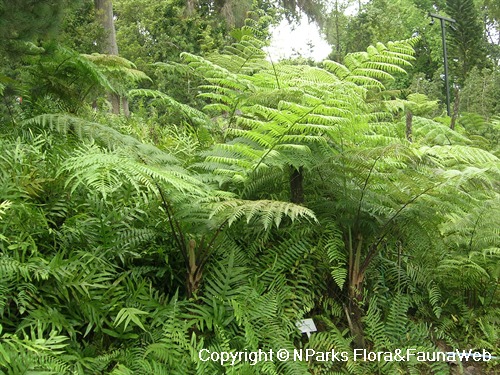
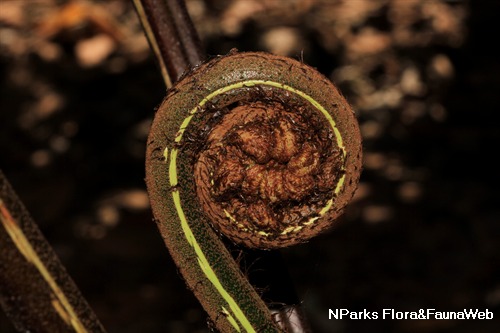
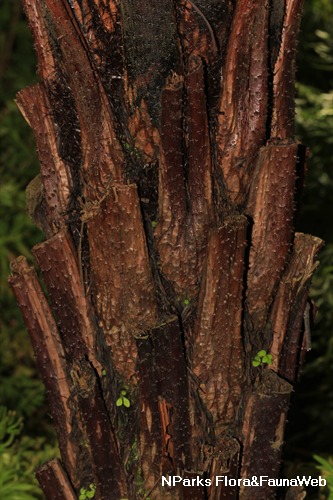

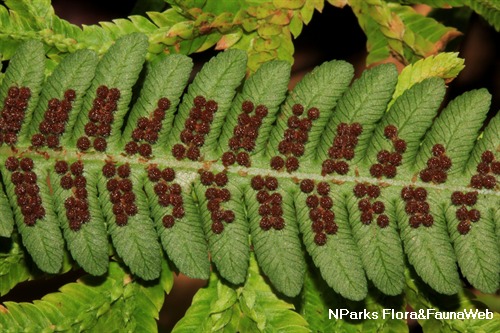
.jpg)
.jpg)
.jpg)
.jpg)